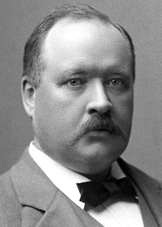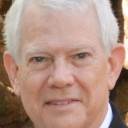February 19: Svante Arrhenius
Svante Arrhenius (1859)
It was on this date, February 19, 1859, that Swedish chemist and Nobel laureate Svante August Arrhenius, one of the founders of the science of physical chemistry, was born in Vik. Popular story relates that Arrhenius taught himself to read at the age of three, and became a mathematics prodigy in childhood. He studied at a cathedral school as a child, but couldn’t keep his mind on the heavens.
Arrhenius developed a groundbreaking theory on the dissociation of substances into electrolytes or ions (Michael Faraday coined the term “ion”), begun with his doctoral thesis postulating that substances are partly converted into an active form when dissolved, and that this active part determines the substance's electrical conductivity. The theory was too radical for the University of Uppsala, but he shopped it around for almost a decade and was finally recognized for his original work: in 1903, Arrhenius was awarded one of the first Nobel prizes in chemistry. In 1914, he was awarded the Faraday Medal.
His scientific mind was broad enough to embrace other disciplines: Arrhenius was interested in the effect of temperature on chemical reaction rates, in the causes behind the aurora borealis or northern lights and in speculations that interstellar “germs” might have seeded the stars with life, also known as “panspermy.” His equation showing the effect of temperature on reaction rates is still called the Arrhenius law. The Arrhenius equation, the lunar crater Arrhenius and the Arrhenius Labs at Stockholm University are named after him. One of his most prescient interests was in predicting that rising levels of carbon dioxide (CO2) would cause the earth's temperature to rise, what we today call the greenhouse effect.
In his 1903 Nobel Lecture, Arrhenius reflected on a very materialist theme:
At first sight nothing seems more obvious than that everything has a beginning and an end, and that everything can be subdivided into smaller parts. Nevertheless, for entirely speculative reasons the philosophers of Antiquity, especially the Stoics, concluded this concept to be quite unnecessary. The prodigious development of physics has now reached the same conclusion as those philosophers, Empedocles and Democritus in particular, who lived around 500 B.C. and for whom even ancient man had a lively admiration.”*
In 1905, German biologist and naturalist Ernst Haeckel (1834-1919) founded a group called the "Monist League" to promote his religious and political beliefs. The League was the German equivalent of the British Rationalist Press Association, that is, it attracted atheists and agnostics. Svante Arrhenius was a member in good standing up to his death on 2 October 1927.
* Svante Arrhenius, “Development of the Theory of Electrolytic Dissociation,” Nobel Lecture, 11 December 1903. In Nobel Lectures: Chemistry 1901-1921 (1966), 4.
Originally published February 2011 by Ronald Bruce Meyer.


